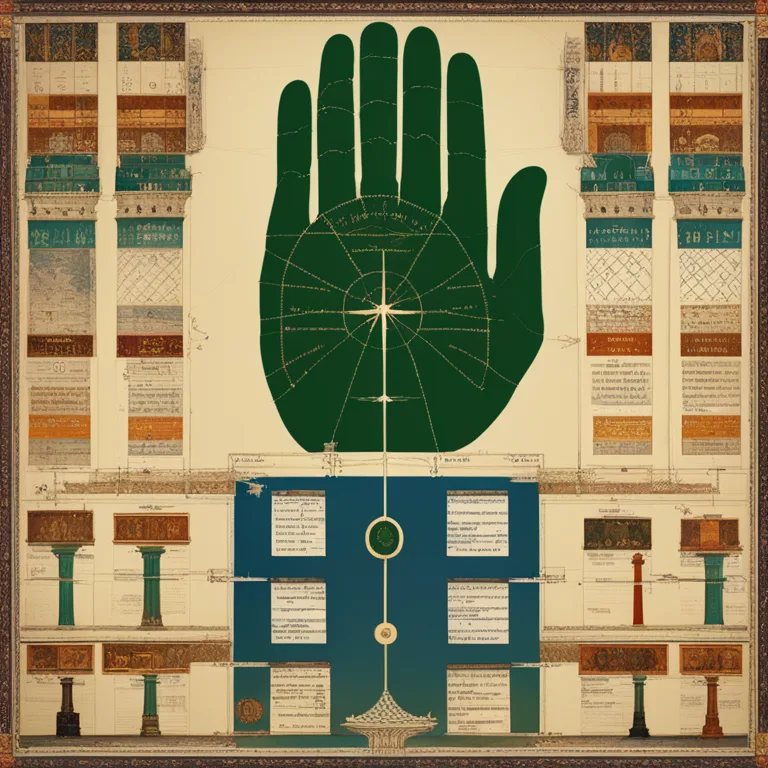
The Genesis of Palmistry: Secrets In The Lines
Discover the ancient roots and purposes behind palmistry, the art of character and fortune reading through the study of palms.
article by Nora Pennington
The Birth of Palmistry
Palmistry, or chiromancy, is an ancient practice that endeavours to reveal one's personality, potential future, and hidden talents through the analysis of palm lines, shape, and other hand features. Its creation traces back to various ancient civilizations, where it emerged independently as a means of divination and self-understanding. In ancient India, palmistry was seen as a branch of astrology, while in China, it aligned with the philosophical traditions of Taoism and the belief in the natural order of things reflected in the human body.

The Cultural Integration of Palmistry
Over time, palmistry crossed cultures and borders, gaining prominence particularly within the realms of Greek and Roman scholarship. Aristocratic societies viewed it as a sophisticated form of knowledge, with scholars such as Aristotle and Hippocrates allegedly regarding the hands as a microcosm of the self. The practice thus flourished alongside astrology and numerology, part of a suite of esoteric tools for insight into the human condition.

Religious Influence and Opposition
The interplay between palmistry and religion has been historically complex. In some periods, religious authorities regarded it with suspicion, while in others, it was seen as an extension of divine knowledge. Through the Middle Ages and the Renaissance, palmistry experienced both condemnation and tolerance, with its survival hinging upon the whims of changing religious and political tides. It was, however, often preserved through secret teachings and texts.

Palmistry’s Evolution in the Modern World
As society entered the Age of Enlightenment, and later the modern era, palmistry adapted to coexist alongside new scientific and psychological insights. The late 19th and early 20th centuries saw a resurgence of interest spurred by figures like Cheiro and Dr. Charlotte Wolff, who worked to bring a more methodical and empirical approach to palmistry practices, trying, in a way, to harmonize it with the era's thirst for rationalism.

The Purpose Behind the Practice
Palmistry was created as an attempt to understand the unknown, providing comfort and counsel through life's uncertainties. It served as a guide for personal growth, a tool for aligning one's actions with perceived life patterns, and as a form of counseling. Today, many seek palm readings for self-reflection, gaining insights into their strengths and weaknesses, and uncovering potential life paths that may be etched into their very flesh.
Palmistry's Renewed Significance
In our contemporary world, where digital connections often replace physical ones, palmistry offers a touch of intimacy and a sense of personal discovery that is deeply human. Its creation was never about deterministic future-telling, but rather about providing a mirror through which an individual might view themselves in a new light, discovering the vast landscapes of possibility within the lines of their hands.
Published: 1/3/2024
Modified: 1/3/2024
More predictions
Come back here soon to learn more about yourself and your future


Palmistry Lifespan Insights: How Long May You Live?
Delve into the art of palmistry to discern potential lifespan indicators from the lines and features of your hands in this insightful article.


Palm Lines and Love Connections
Delve into the fascinating world of palmistry and discover how your palms may hold the secrets to love and relationships.


Palmistry's Insight into Your Health
Discover the connections between the lines on your palm and your well-being in this comprehensive look at palmistry’s role in health forecasting.